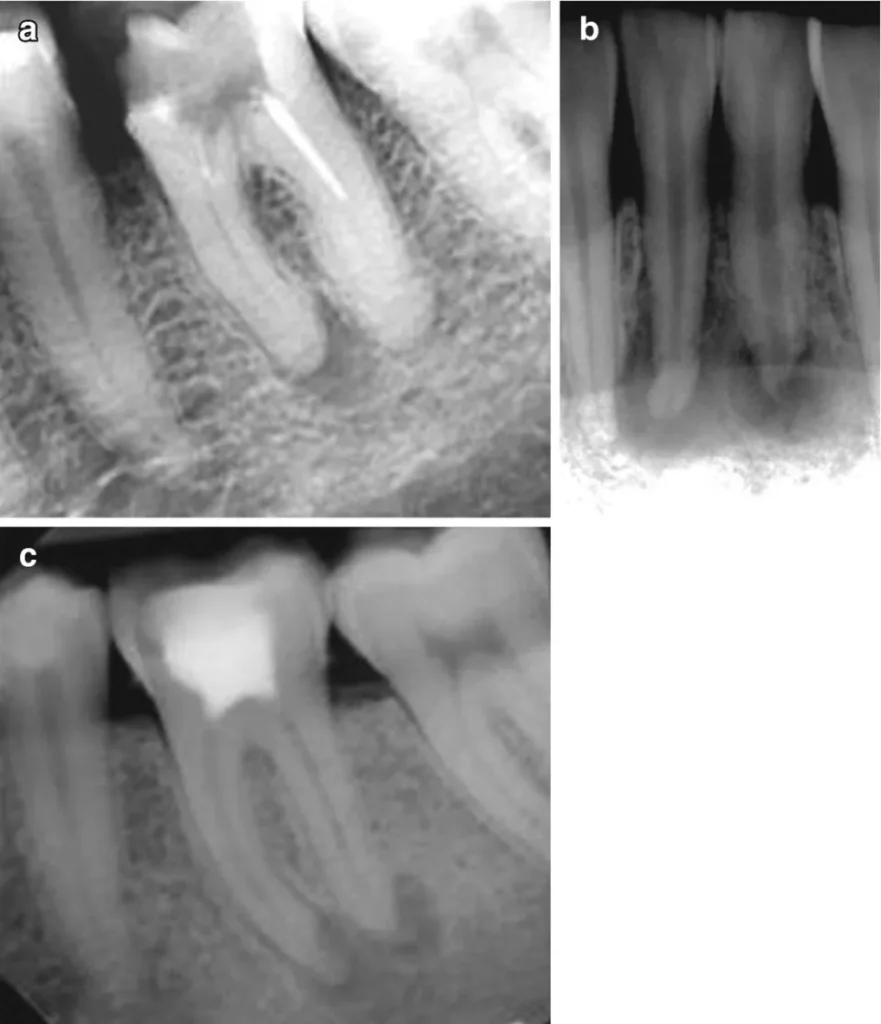Asymptomatic Apical Periodontitis Explained

The complex and often misunderstood world of dental health issues is replete with conditions that, despite their potential for significant discomfort and long-term damage, can remain asymptomatic for extended periods. Among these, asymptomatic apical periodontitis stands out as a particularly intriguing example. This condition, characterized by inflammation of the periodontal ligament surrounding the root of a tooth, can exist without noticeable symptoms, making it a challenge for both diagnosis and treatment. To delve into the nuances of asymptomatic apical periodontitis, it’s essential to understand its causes, symptoms (or the lack thereof), diagnosis, and treatment options, as well as its implications for oral health.
Understanding Apical Periodontitis
Apical periodontitis is an inflammatory condition that affects the periapical region of the tooth, which includes the periodontal ligament, the cementum covering the root, and the surrounding alveolar bone. This inflammation is typically a response to bacterial invasion of the pulp or as a result of trauma to the tooth. The condition can manifest in two primary forms: symptomatic and asymptomatic.
Symptomatic Apical Periodontitis: Often presents with noticeable symptoms such as pain, particularly when biting or pressing on the tooth, sensitivity to thermal changes, and sometimes swelling or a sinus tract leading from the root of the tooth to the oral cavity or skin.
Asymptomatic Apical Periodontitis: By contrast, asymptomatic apical periodontitis may not present with any obvious symptoms. Despite the lack of symptoms, the condition can still cause significant damage to the tooth structure and surrounding bone over time.
Causes of Asymptomatic Apical Periodontitis
Several factors can contribute to the development of asymptomatic apical periodontitis:
- Bacterial Invasion: The primary cause is often related to bacterial invasion of the pulp, either through deep caries, cracks in the tooth, or following dental procedures.
- Trauma: Physical trauma to the tooth can also initiate the inflammatory process, even if the tooth appears intact.
- Periodontal Disease: Advanced periodontal disease can extend to the apex of the tooth, causing inflammation in the periapical region.
Diagnosis of Asymptomatic Apical Periodontitis
Diagnosing asymptomatic apical periodontitis can be challenging due to the absence of clear symptoms. However, dental professionals use several methods to identify the condition:
- Radiographic Examination: X-rays and CBCT scans are crucial for detecting changes in the bone structure around the apex of the tooth, which can indicate the presence of apical periodontitis.
- Thermal and Electrical Tests: These tests assess the vitality of the tooth by applying heat, cold, or an electric current. A tooth with apical periodontitis may respond differently compared to a healthy tooth.
- Palpation and Percussion: Gentle pressing or tapping on the tooth can sometimes reveal tenderness, which may suggest inflammation, even in the absence of other symptoms.
Treatment of Asymptomatic Apical Periodontitis
The treatment approach depends on the underlying cause and the extent of the condition. Common treatments include:
- Root Canal Therapy: If the condition is due to bacterial invasion of the pulp, root canal therapy may be necessary to remove infected tissue and prevent further inflammation.
- Extraction: In cases where the tooth is non-restorable, extraction followed by replacement with a prosthetic tooth may be the best option.
- Monitoring: If the condition is mild and asymptomatic, regular monitoring with radiographs to assess the healing process or progression of the condition may be advised.
Prevention
Preventing apical periodontitis involves maintaining good oral hygiene, attending regular dental check-ups, and addressing dental issues promptly to prevent the spread of infection or further damage to the tooth and surrounding tissues.
Conclusion
Asymptomatic apical periodontitis represents a complex challenge in dental healthcare due to its potential to cause significant damage without overt symptoms. Understanding its causes, recognizing the importance of regular dental check-ups for early detection, and prompt treatment are critical for preventing long-term damage and ensuring the preservation of oral health.
What are the primary causes of asymptomatic apical periodontitis?
+The primary causes include bacterial invasion of the pulp and physical trauma to the tooth, which can lead to inflammation of the periapical region without obvious symptoms.
How is asymptomatic apical periodontitis diagnosed?
+Diagnosis typically involves radiographic examination, thermal and electrical tests to assess the vitality of the tooth, and sometimes palpation and percussion to check for tenderness.
What are the treatment options for asymptomatic apical periodontitis?
+Treatment options include root canal therapy to remove infected pulp tissue, extraction of the tooth if it's non-restorable, and monitoring with regular radiographs to assess healing or progression.
Advanced Considerations
The management of asymptomatic apical periodontitis underscores the importance of comprehensive dental care. By understanding the complex interplay between the tooth, the surrounding bone, and the immune system’s response to infection or injury, dental professionals can offer targeted treatments that address not just the symptoms but the root causes of the condition. Furthermore, advances in diagnostic technologies and therapeutic approaches are continually refining the field, providing more effective and less invasive options for patients.
Future Directions
As research continues to elucidate the mechanisms underlying apical periodontitis, there is a growing interest in regenerative therapies and biomaterials that could potentially heal or replace damaged tissues. These advancements hold promise for more conservative and effective treatments, improving outcomes for patients and highlighting the evolving nature of dental healthcare.
In conclusion, asymptomatic apical periodontitis is a condition that, while challenging to diagnose due to its lack of symptoms, can be effectively managed with the right diagnostic tools and treatment strategies. By emphasizing prevention, early detection, and innovative therapies, individuals can better protect their oral health and reduce the risk of complications associated with this condition.

